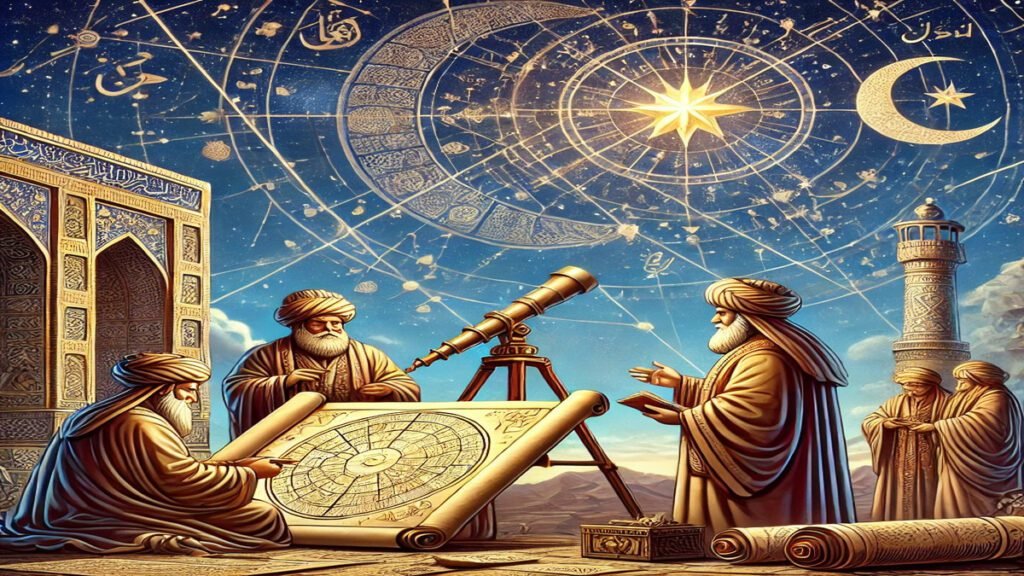The Christmas Star—known as the Star of Bethlehem—holds a central place in the Nativity story, guiding the Magi to the newborn Christ. But a fascinating question arises: Was this star a universal celestial event visible to the entire world, or was its appearance more localized and symbolic? Let’s dive into this intriguing mystery, blending biblical accounts, historical evidence, and spiritual insights.
The Biblical Account
The Star of Bethlehem is described in Matthew 2:1–12. The Gospel recounts how wise men, or Magi, from the East followed a star that led them to Jesus in Bethlehem:
“We saw His star when it rose and have come to worship Him” (Matthew 2:2).
The Magi were likely scholars and astrologers familiar with celestial patterns. To them, the star’s appearance wasn’t just astronomical—it carried profound spiritual significance, heralding the birth of a King.
Could Everyone See the Star?
The Bible does not specify whether the star was visible worldwide, but historical and scientific exploration provides clues:
- Natural Phenomenon
Some scholars propose that the Christmas Star could have been a natural celestial event, such as:- A Great Conjunction: The close alignment of Jupiter and Saturn, visible in 7–6 BCE. Such events could create a bright “star-like” appearance.
- A Nova or Supernova: A sudden stellar explosion, creating an exceptionally bright light visible across regions.
- A Comet: Halley’s Comet or another comet visible around the time of Jesus’ birth.
- A Supernatural Event
Others believe the star was a miraculous, divine sign visible only to the Magi or those attuned to its significance. This view aligns with God’s pattern of using unique signs to guide His people, such as the pillar of fire in Exodus (Exodus 13:21–22).
Who Were the Magi?
The Magi were not kings, as popular tradition sometimes suggests, but scholars or priests from Persia or Babylon. They were well-versed in astronomy and astrology, likely influenced by Jewish teachings from the time of the Babylonian exile. The prophecy of a Jewish Messiah (Numbers 24:17) could have sparked their interest when they observed the unusual star. This cultural and religious blend highlights the universal reach of Christ’s birth.

Who Noticed the Star?
Interestingly, King Herod and his advisors in Jerusalem seemed unaware of the star’s appearance until the Magi mentioned it (Matthew 2:3–4). This implies that:
- The star might not have been universally conspicuous.
- Its significance required spiritual discernment, not just physical sight.
What Does This Mean for Us Today?
Whether the Christmas Star was seen worldwide or just by a select few, its message transcends time and geography. The star symbolizes God’s guidance, drawing people to Christ from all corners of the earth. Just as the Magi followed the star, we are called to follow God’s leading, even when others may not see or understand it.
Practical Reflection
- Seek God’s Guidance: Like the Magi, look for God’s direction in your life. His signs may not always be visible to everyone, but they are uniquely meant for you.
- Be a Light: The Christmas Star reminds us to shine brightly, leading others to Christ through our lives and actions (Matthew 5:14–16).
- Recognize Signs Around You: God’s guidance today may come in subtle ways—a word from a friend, an unexpected opportunity, or a moment of clarity. Be attentive to His leading.
Connection to Christmas Traditions
Today, the Star of Bethlehem is commemorated in nativity scenes and as the crowning symbol atop Christmas trees. Its presence in our celebrations serves as a reminder of God’s miraculous guidance and the light of hope Christ brings to the world.

Conclusion
The question of whether the Christmas Star was seen worldwide remains open to interpretation. What’s undeniable, however, is its purpose: to announce the birth of the Savior and invite all people—near and far—to seek Him. As we reflect on this miraculous event, let us remember its timeless lesson: God’s light reaches those who are searching, no matter where they are.
What do you think? Was the Christmas Star a universal event or a personal sign? Share your thoughts in the comments below!
(References: Matthew 2:1–12; Numbers 24:17; Exodus 13:21–22; historical records of astronomical phenomena around 7–6 BCE)



